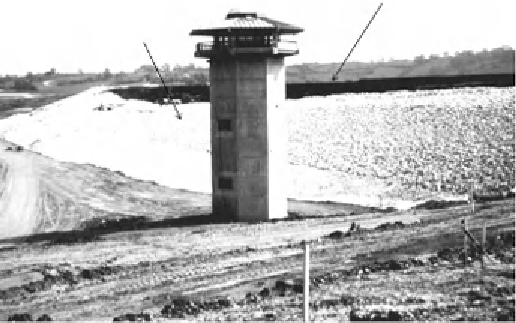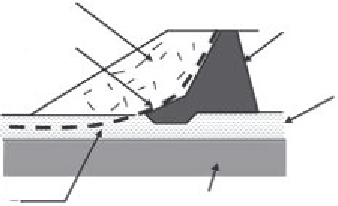Geology Reference
In-Depth Information
failure
Carsington Dam is infamous because it collapsed over a long length
during construction in June 1984
(Figure 7.5)
. The project was delayed
by seven years as a result. A major factor was that the foundation
materials were mistakenly considered to comprise undisturbed residual
clay derived from
in situ
weathering of the underlying mudstone,
whereas they were later identi
ed as periglacial head deposits
(Figure 7.6)
. The head deposits contained pre-existing slip planes along
which the shear strength was far lower than had been assumed for the
original design (Skempton & Vaughan, 1993). In hindsight, probably
the clay above bedrock shouldhave been excavatedprior to construction
of the dam, aswas done for the reconstruction of the dam (Banyard
et al
.,
1992). As noted in
Chapter 3,
pre-existing shear surfaces are recognised
commonly in quite young soils and particularly in the London Clay
where they have been associated with landslides.
Black area is rear scarp of
failure along much of the
length of the dam
Figure 7.5
Failure
Black area behind
water intake
structure is tension
crack due to failure
over 400 m length
of the dam crest.
White area in front
is limestone riprap.
White
limestone
riprap
Coal Measures mudstone
rock fill
clay core
slip surface
yellow clay
thought to be
residual by
designers
clay found to be transported
'head' with pre-existing
shear surfaces (periglacial)
φ not 20
but 12
in situ
mudstone


